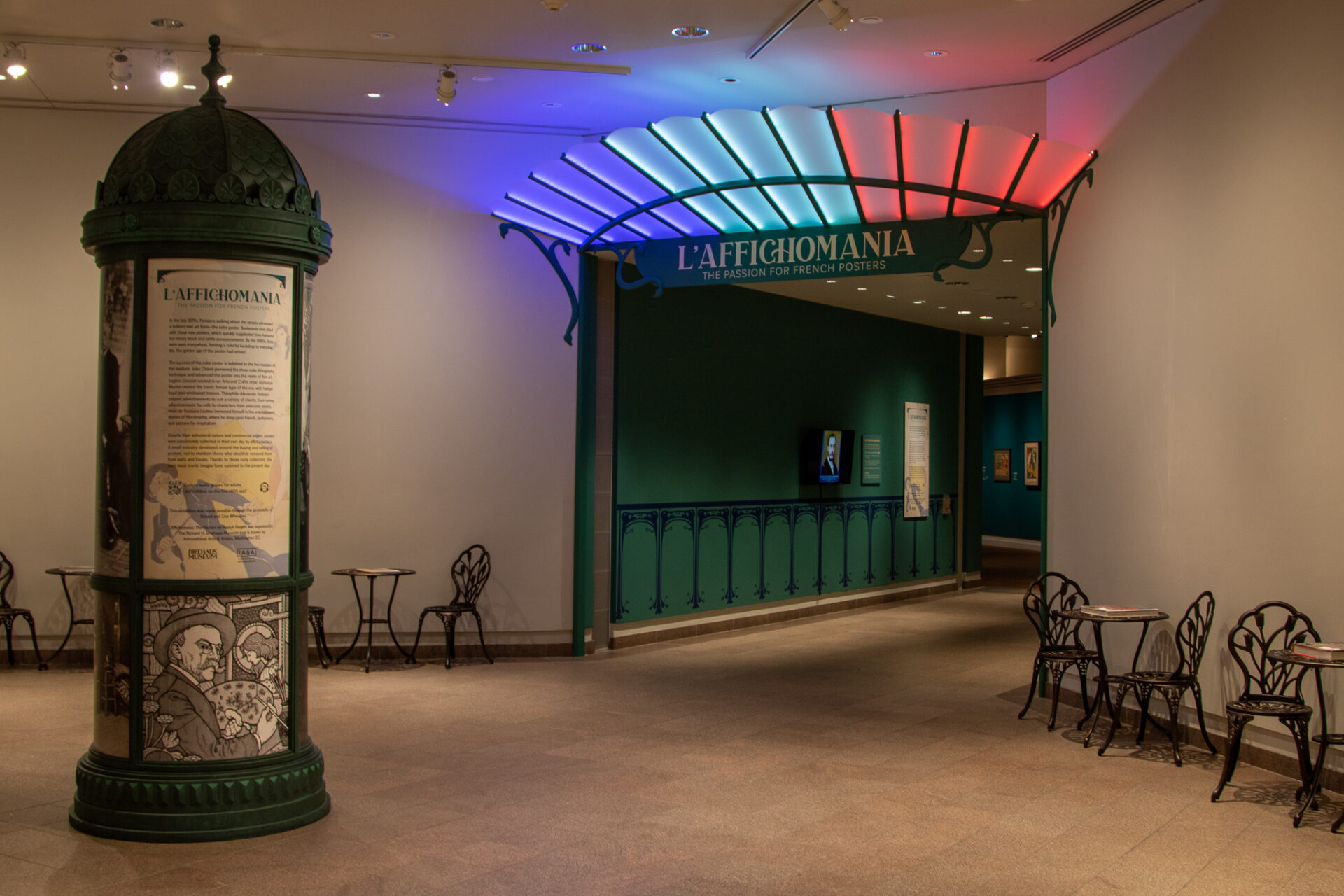
The basement of the Museum of Art has been transformed to feel like a Parisian metro station. The walls are warm teal colored. Ornate cafe tables line the entrance of the exhibit. On the walls are lively and vibrant scenes captured from the boulevards of 19th century Paris.
The Museum of Art’s new exhibit, L’Affichomania: The Passion for French Posters, is on display in the basement until Feb. 19, 2022. The exhibit features posters from several artists including Jules Chéret, Eugène Grasset, Alphonse Mucha, Théophile-Alexandre Steinlen and Henri de Toulouse-Lautrec.
Beyond the vivid and energetic scenes is insight into womanhood, art and advertising in 19th century France.
“The spectacle of advertising turns a city and its walls into a sort of open air museum, a participatory museum that interacts with people and then also becomes a regulated space where business, government and the rogue artists can interact and compete,” said Marc Olivier, BYU French and Italian professor.
Olivier explained that a blank wall in the city is not the same as a blank wall in a museum. The advertising space in the city becomes chaotic and busy, he said.
“What we are seeing in the exhibit are things that some people collected and appreciated and a lot of people saw as background to their lives,” Olivier said.
Museum director Janalee Emmer said these posters are an example of ephemera, objects that aren’t originally thought of as something to be preserved.
“I always argue that this kind of material, this popular culture, does more to kind of inform how people think about say women’s roles than paintings in museums that fewer people have access to,” Emmer said.
Heather Belnap, associate professor of art history and European studies coordinator, said that all the posters depict a specific form of women from the 19th century. Belnap described the first form, “la Parisienne,” as well dressed, poised, confident, cultured women and the envy of women around the world. These women often wore corsets in a time where the practice of tight lacing was on its way out.
Another form, “the new women,” was a product of the suffrage and progressive movements, searching for more opportunities in the public sphere, Belnap said. She said the new women would have short hair, wear pants and smoke in an effort to fight against femininity that was pushed onto them.
Many of the posters feature bicycles, which represent another type of woman, “the cycling woman,” Belnap said. This woman represents an emancipated working woman. The shift toward cycling in the time the posters were created brought a shift toward functional fashion and confident attitudes that can be seen in the advertisements.
“I do think that this is one of the functions of the posters too, to encourage travel and tourism, to create this sense of fun and fabulousness that others could then embrace,” Belnap said.
The exhibit is organized by The Richard H. Driehaus Museum and is toured by the International Arts & Artists in Washington, D.C. An audio guided tour for the exhibit can be found on the BYU Museum of Art app.




